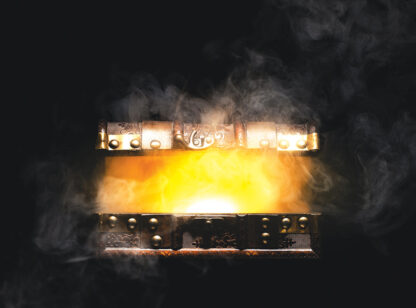Are you facing a challenge? Don’t sweat it. Sleep on it. Sleeping allows for dream incubation, a method of guiding dreams with intention to help solve problems. This primordial dream programming ritual to “hatch an idea” was first referenced in the Chester Beatty papyri found near Thebes in Upper Egypt and presently housed in The British Museum.1
Incubated dreams in historical texts often involved an epiphany that changed the dreamer’s life. These changes were usually brought about by a dream deity, angel, spirit guide, animal or deceased loved one delivering a guided message like a healing treatment. Upon awakening, the person would remember the visitation and benefit from the dream. During the 8th century BC, in The Iliad, Homer wrote of Greek King Agamemnon’s “solution dream” concerning war with the Trojans.2
Ancient Greeks also practiced dream incubation at the Asclepeion temples where dreamers slept on earthen beds to incubate prophetic answers.3 In many ancient societies worldwide, sleeping within sacred areas became synonymous with dream incubation: Northern Africans slept in tombs to incubate dreams where they met spirit guides and received news of deceased loved ones4; the Crow Indians chose mountain and tree-top beds with deadly drop-offs during vision quests5; seekers to the Trophonian incubation oracle in Greece slept swaddled and banded in linen upon freshly-slaughtered ram’s hides6; American Indians still practice dream incubation today as a form of vision quest.
Modern science’s first-night-effect, which demonstrates why it is hard to fall asleep in new places, suggests why sleeping in sacred places enables problem-solving dreams. Sleep and dreams are influenced when experimental subjects sleep in the laboratory for the first time; their disrupted REM sleep alters dream content to include references to the laboratory situation.7 These findings corroborate the idea that pre-sleep dream incubation may affect dreams.
While guided dream methods have been known to humankind for 5,000 years, incubation techniques have evolved. Modern dream incubation can involve simple and safe pre-sleep rituals like prayer and meditation to shape dream content aimed at solving an issue. So, rather than wrapping ourselves in freshly sacrificed skins or sleeping in the highest neighborhood tree, there are new ways to incubate a dream…
As you prepare for bed, define your challenge and set your dream intention. What specific information would you like to receive? Write it on a piece of paper. Place the paper under your pillow and “sleep on it” for incubation. When you wake, write down your dream, review your intention and search for your answer. And unlike ancient times, this modern incubation technique is vegan-friendly.
Kathleen O’Keefe-Kanavos of Rancho Mirage is a dream expert and has been featured on Dr. Oz and The Doctors. For more information, visit www.KathleenOkeefeKanavos.com.
References available upon request.

















































Comments (0)